Union Stock Yards
Introduction
Text-to-speech Audio
While all that remains of the former sprawling stockyard is the former gate, on December 25, 1865, this area began receiving the first of millions of cattle that would be processed and shipped in a centralized facility that would be the largest early example of applying scale and industrial techniques to beef production. Beginning shortly after the Civil War, these Chicago stockyards became the center of the meatpacking industry. The flat land and railroads allowed for the establishment of centralized processing, becoming essential to Chicago's growth. Upton Sinclair's 1906 classic, The Jungle, refers to the stockyards' conditions by the turn of the century. While the stockyards closed in 1971, the former Union Stock Yard gate remains along with a few other buildings and associated landmarks. The gate was constructed about ten years after the stockyards opened.
Images
The Union Stock Yards, 1866
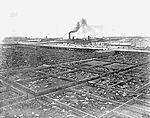
1870s

Louise Wade "Chicago's Pride" For more information on this book, click the link below!
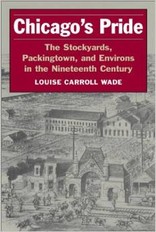
James Barrett "Work and Community in the Jungle" Click the link below for more information on this publication!
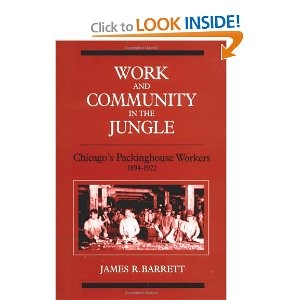
Photograph of the Union Stock Yards Gate, c. 2017.
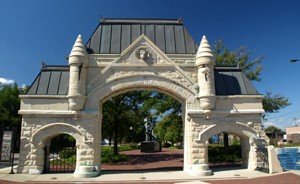
Image of the Union Stock Yards Gate, c. 1901-1907.
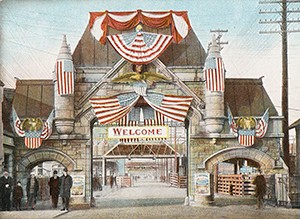
Backstory and Context
Text-to-speech Audio
The limestone gate depicts a steer and has been listed as a Chicago landmark since the early 1970s. Representing how historical interpretations change over time, the gate now includes a historical marker sharing the history of the perspective of laborers.
Sources
1 Louise Carroll Wade, "Meatpacking," Encyclopedia of Chicago, chicagohistory.org, last accessed October, 2016, http://www.encyclopedia.chicagohistory.org/pages/804.html. Further Reading: Barrett, James R. Work and Community in the Jungle: Chicago's Packinghouse Workers, 1894–1922. 1987. Skaggs, Jimmy K. Prime Cut: Livestock Raising and Meatpacking in the United States, 1607–1983. 1986. Wade, Louise C. Chicago's Pride: The Stockyards, Packingtown, and Environs in the 19th Century. 1987.
2 Union Stock Yards Gate, Chicago Literary Hall of Fame. Accessed December 28th 2019. https://chicagoliteraryhof.org/literary_chicago_map/landmark/union-stock-yard-gate#.
3 Union Stock Yard Gate, City of Chicago. Accessed December 28th 2019. https://webapps1.chicago.gov/landmarksweb/web/landmarkdetails.htm?lanId=1441.
Image courtesy of Frederick J. Nachman from the Chicago Literary Hall of Fame.
Image courtesy of the Chicago Literary Hall of Fame.
